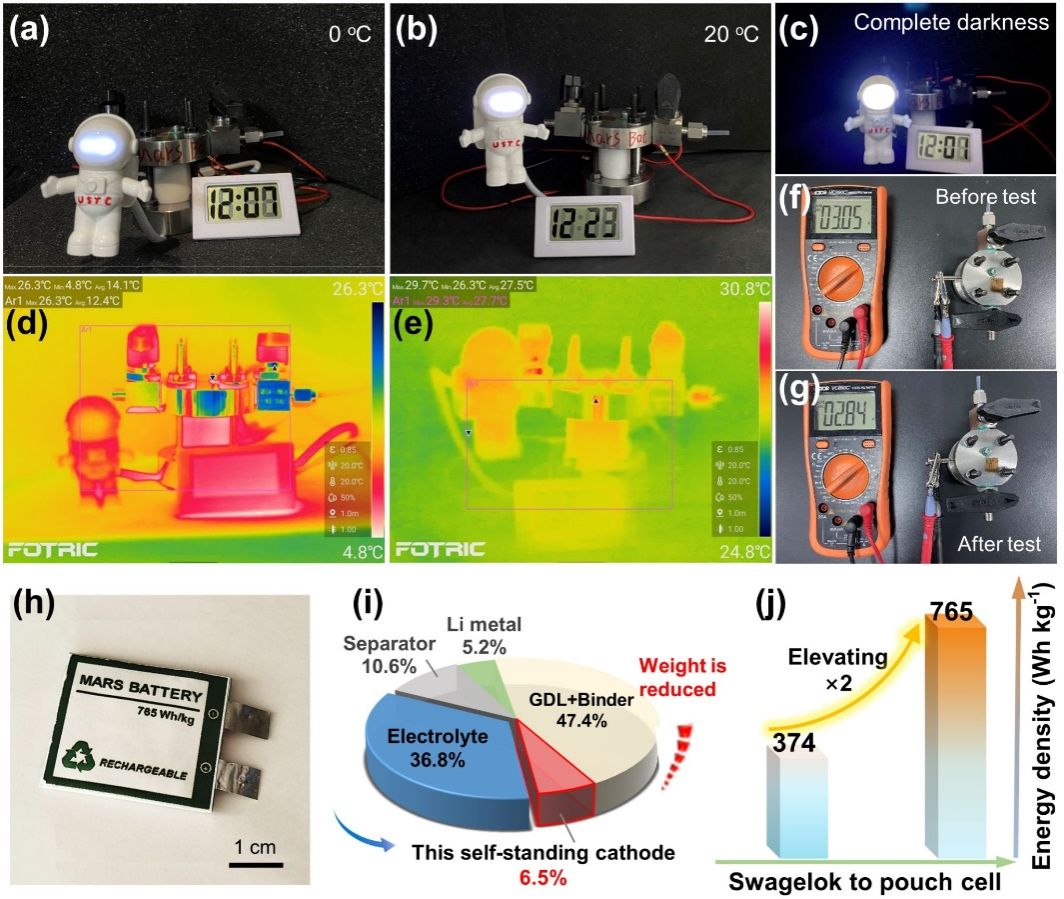A research team led by Prof. TAN peng from the University of Science and Technology of China (USTC) of the Chinese Academy of Sciences (CAS) has proposed a new type of battery that could provide energy on Mars. The battery, which uses Martian atmospheric components as fuel for its reactions, has higher energy density and longer stable cycling than previous designs. The study was published in Science Bulletin.
As the content of carbon dioxide in the atmosphere of Mars is as high as 95.32%, batteries using lithium and carbon dioxide as reactants are considered to have potential applications in Mars exploration. However, the complex environment on Mars, including multiple gas components and intense temperature fluctuations, is often overlooked. Within the range of 0-60℃, the electrochemical performance of Mars batteries exhibits significant temperature dependence.
To address the problem, the team simulated the real environment on the surface of Mars and developed a Mars battery system that uses the Martian atmosphere as direct fuel, achieving sustainable output of electrical energy. At a low temperature of 0℃, the energy density of the battery was measured to be 373.9Wh/kg, with a cycle life of 1375 hours (approximately 2 Martian months).
Specifically, the battery undergoes electrochemical reactions involving the generation and decomposition of lithium carbonate during charging and discharging. By utilizing integrated electrode preparation and foldable battery structure, the team enlarged the cell size to 2×2cm2, further improving the energy density of the pouch battery to 765 Wh/kg and 630 Wh/L.
This study conceptually validates the potential use of Mars batteries in actual Martian conditions and paves the way for the development of multi-energy complementary systems for future space missions.

The application and development potential of Mars batteries. (Image by USTC)
Paper Link: A high-energy-density and long-cycling-lifespan Mars battery - ScienceDirect
(Written by XU Jingqi, Edited by WU Yuyang, USTC News Center)